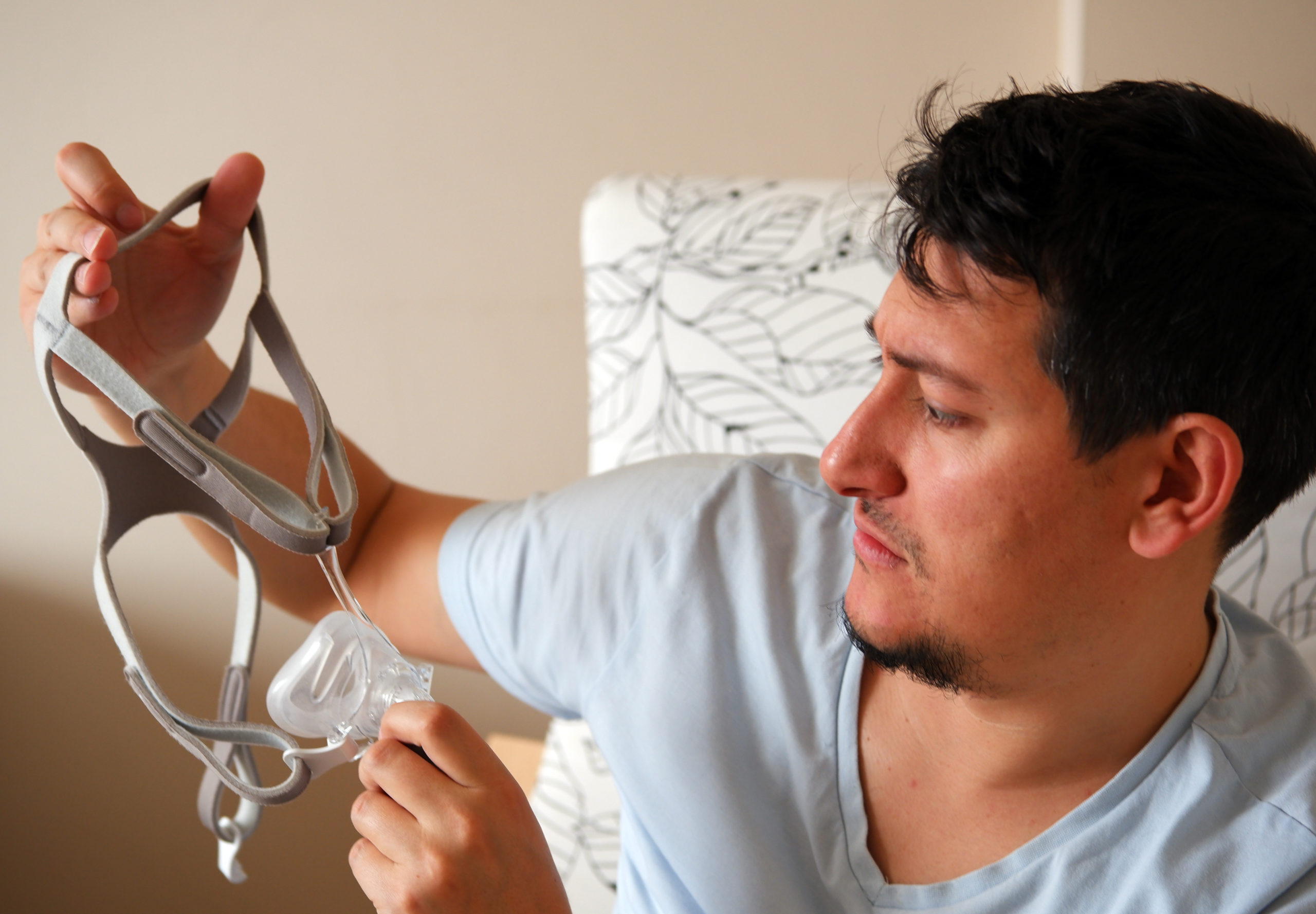Continuous positive airway pressure, or CPAP, is the most common treatment prescribed for obstructive sleep apnea (OSA). CPAP involves wearing a mask that fits into the nostrils, underneath or over the nose, or over the nose and mouth, through which pressurized air is delivered via tubing from a machine to keep the upper airway open during sleep. CPAP is recommended by the American Academy of Sleep Medicine (AASM) as the initial treatment for moderate or severe OSA, and in mild cases of OSA when associated with insomnia, disrupted sleep, or excessive daytime sleepiness. When used consistently, and when treatment is effective, CPAP improves daytime sleepiness, quality of life, and it can have positive impacts on cardiac and metabolic health.
The effectiveness of CPAP depends on using the device correctly and consistently, since OSA is a chronic disease that requires long-term treatment. Most sleep doctors, myself included, recommend that patients with sleep apnea use their treatment whenever they sleep, in order to derive optimal benefit. While there are many patients who love their CPAP machines and report the treatment to be life-changing, and are unable to sleep without CPAP, there are others who learn to accept and tolerate CPAP because they appreciate either the functional benefits (such as better mood and less daytime sleepiness) or medical improvements they get from using the device. However, many patients struggle with CPAP.
CPAP is not easy and there are common complaints
Despite the many potential benefits, CPAP adherence estimates from clinical data and insurance groups suggest that about 50% of CPAP users either do not reach minimum adherence criteria or discontinue the treatment. Each patient is unique and may have individual struggles with CPAP; however, there tend to be similar themes among users. Some of the common complaints I hear from patients who have trouble tolerating CPAP include
- mask issues, including mask discomfort, skin irritation or marks, feelings of claustrophobia, or discomfort with the appearance of wearing a mask
- dryness, especially waking with a dry mouth
- removing the mask during sleep
- pressure intolerance, from either too much pressure or not enough pressure; trouble exhaling against the CPAP pressure; or swallowing air (aerophagia)
- breathing that feels out of sync
- noise from the machine bothering the patient or their bed partner.
Troubleshooting issues with CPAP tolerance
First and foremost, patients should partner with their doctor and healthcare team. OSA is a serious disease that warrants treatment. Before starting treatment, patients should be educated about OSA, learn about all treatment options and new technologies, and know what to expect with CPAP. Patients benefit from close clinical follow-up, including a review of data from their CPAP device (which may also be important for continued insurance coverage). Family and/or partner support is also important, as friends or family can help encourage and support CPAP use.
Other tips to improve adherence:
- Behavioral and medication interventions.






